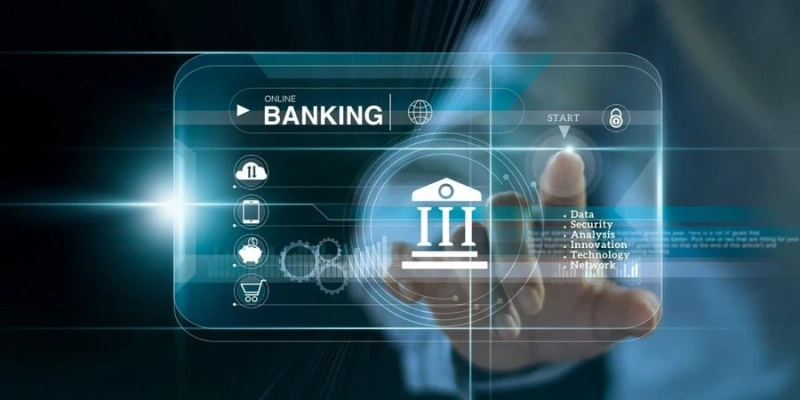The banking industry is evolving at a rapid pace, driven by technological advancements that are reshaping the way financial institutions operate and interact with customers. As we move into 2024, several key banking technology trends are set to revolutionize the sector, enhancing efficiency, security, and customer experience.
Artificial Intelligence and Machine Learning
Artificial intelligence (AI) and machine learning (ML) are at the forefront of banking technology trends in 2024. These technologies are transforming various aspects of banking, from customer service to fraud detection. AI-powered chatbots and virtual assistants are becoming increasingly sophisticated, providing customers with instant, personalized support. Machine learning algorithms are being used to analyze large datasets, identify patterns, and make predictive analytics, enabling banks to offer tailored financial products and services.
Blockchain and Cryptocurrencies
Blockchain technology and cryptocurrencies continue to gain traction in the banking sector. Blockchain offers a secure and transparent way to record transactions, reducing the risk of fraud and improving the efficiency of cross-border payments. Cryptocurrencies are also becoming more mainstream, with some banks exploring the integration of digital currencies into their services. In 2024, we can expect to see more financial institutions adopting blockchain solutions and offering cryptocurrency-related services to meet the growing demand.
Open Banking and API Integration
Open banking is another significant trend shaping the future of banking. By allowing third-party developers to access financial data through APIs (Application Programming Interfaces), banks can offer a wider range of services and create a more competitive and innovative ecosystem. This trend is expected to accelerate in 2024, with more banks collaborating with fintech companies to provide customers with seamless and personalized financial solutions. API integration will also enable faster and more efficient data sharing, improving the overall banking experience.
Digital Wallets and Contactless Payments
The shift towards digital wallets and contactless payments is one of the most noticeable banking technology trends. With the growing preference for cashless transactions, digital wallets such as Apple Pay, Google Wallet, and Samsung Pay are becoming more popular. In 2024, we can expect to see further advancements in this area, with banks offering enhanced digital wallet features and expanding their contactless payment options. This trend not only provides convenience for consumers but also enhances transaction security through technologies like tokenization and biometric authentication.
Enhanced Cybersecurity Measures
As digital banking continues to grow, so does the need for robust cybersecurity measures. In 2024, banks will invest heavily in advanced security technologies to protect against cyber threats. This includes the adoption of multi-factor authentication, biometric security measures such as fingerprint and facial recognition, and advanced encryption methods. Additionally, AI and machine learning will play a crucial role in detecting and mitigating cyber threats in real-time, ensuring that customer data remains secure.
Personalized Banking Experiences
Personalization is becoming a key differentiator in the banking industry. By leveraging big data and AI, banks can offer highly personalized banking experiences that cater to individual customer needs and preferences. In 2024, we can expect to see more banks utilizing customer data to provide personalized financial advice, customized product offerings, and targeted marketing campaigns. This trend not only enhances customer satisfaction but also helps banks build stronger relationships with their clients.
Fintech Collaboration and Ecosystem Expansion
Collaboration between traditional banks and fintech companies is set to increase in 2024. By partnering with fintech firms, banks can leverage innovative technologies and offer a broader range of services. This collaboration enables banks to stay competitive and meet the evolving demands of tech-savvy customers. Additionally, we can expect to see the expansion of the fintech ecosystem, with more banks investing in fintech startups and exploring new business models.
RegTech and Compliance Automation
Regulatory technology (RegTech) is another emerging trend in the banking sector. With the increasing complexity of regulatory requirements, banks are turning to technology to streamline compliance processes. In 2024, we can expect to see more banks adopting RegTech solutions to automate compliance tasks, reduce operational risks, and ensure adherence to regulatory standards. This trend not only improves efficiency but also allows banks to allocate resources to more strategic initiatives.
Sustainable and Green Banking
Sustainability is becoming a significant focus for banks worldwide. In 2024, we can expect to see a rise in sustainable and green banking initiatives. Banks will invest in technologies that promote environmental sustainability, such as digital banking solutions that reduce paper usage and energy-efficient data centers. Additionally, more banks will offer green financial products, such as loans for renewable energy projects and investment options that support environmental, social, and governance (ESG) criteria.
Conclusion
As we look ahead to 2024, the banking industry is poised for significant transformation driven by technological advancements. From AI and blockchain to personalized banking experiences and enhanced cybersecurity measures, these banking technology trends will shape the future of financial services. By staying abreast of these trends, banks can not only improve operational efficiency and security but also provide customers with innovative and personalized banking solutions. Embracing these trends will be crucial for financial institutions aiming to remain competitive in an increasingly digital and dynamic market.



